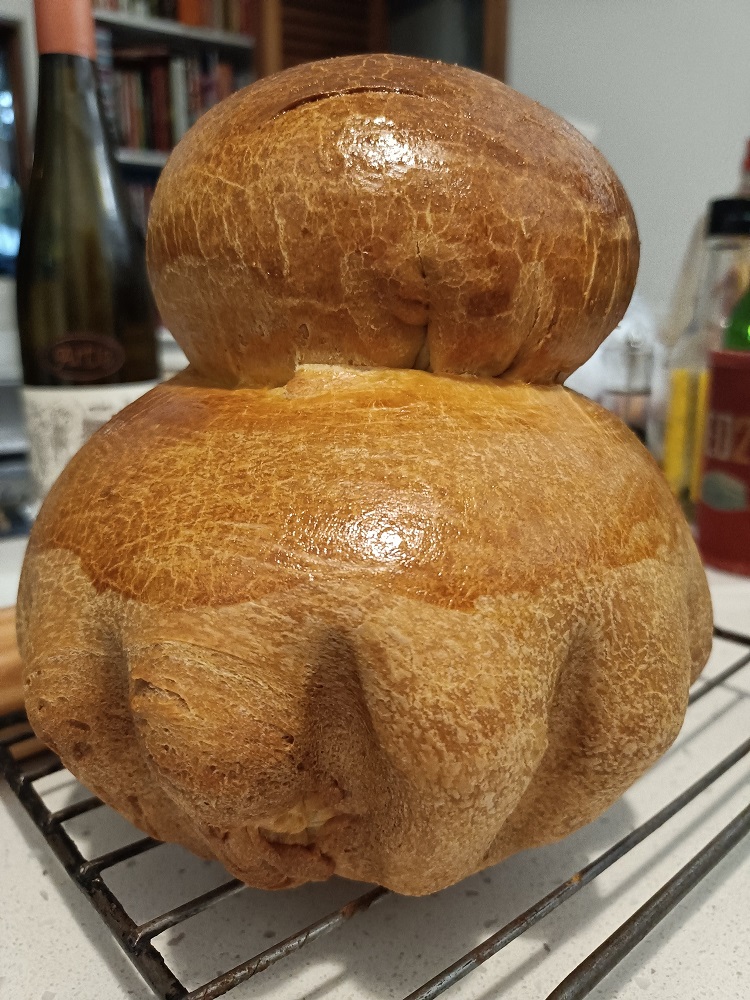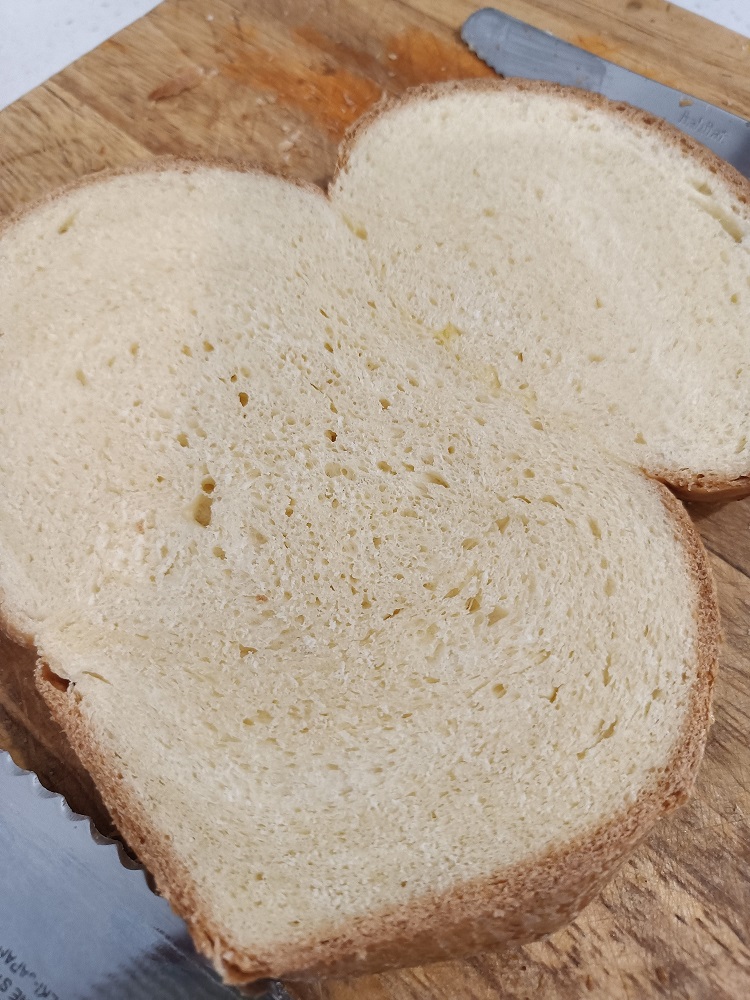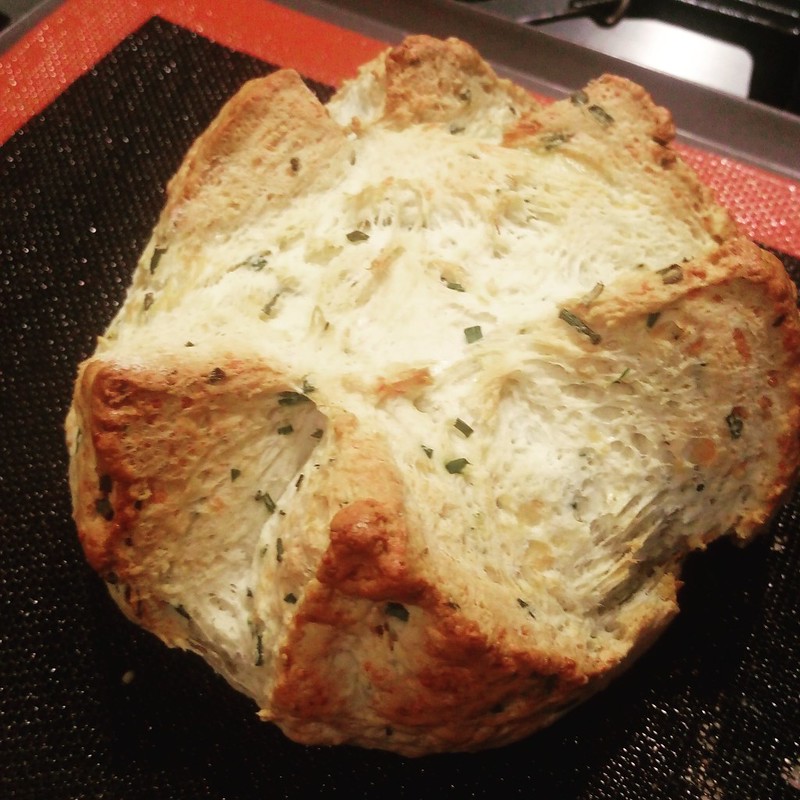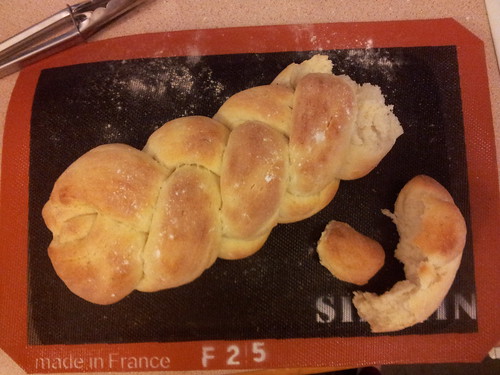I’ve decided that I really need to work my way through my collection of cookbooks in some way … and I figure that an easy way to do that is by picking a recipe from each book and making that recipe a bread recipe (if there is one). Because a/ everyone likes to eat bread and b/ it’s very much a known quantity. Bread, once you have the hang of it, is EASY. Please believe me on this. And while it takes time, it’s not time consuming. In general, you whack some stuff together and then let it sit for a bit before maybe a bit of a knead or a bit of a shape, followed by a bit more sit and then a bake.
The first book on the shelf of choice is The Conran Cookbook by Sir Terence & Caroline Conran & Simon Hopkinson – a chef turned food writer for whom I have a great deal of time. My copy, published in 1997, was purchased at Cheshire Oaks, a factory outlet in Cheshire (England), in 2001. My ex-boyfriend’s mother somewhat patronisingly remarked that it was a good choice for someone ‘starting out’ (at the time I was in my twenties and had quite a few years of good cooking under my belt … the comment rankled at the time and rankles still …).
Anyway – this is a solid book if you have limited bookshelf space or budget, because it covers almost EVERYTHING. Each section has an introduction which takes you through skills, glossary and ingredients before offering a range of recipes. It’s the type of book that I find almost always has a recipe for your ingredient or dish of choice. It is quite densely packed and there is not an illustration for every recipe. If you want beautifully laid out and designed and photographed … then you do need to look elsewhere!
Naturally, it does have a bread section and a recipe for brioche which is always a winner in our house and, to be honest, is not something I’ve yet found an entirely satisfactory recipe for. Spoiler alert: the search continues!
This dough was super super tight (more like pastry) and the finished product had a very close crumb. It tasted good but it was a bit dry (and dried out very quickly – thanks humid weather and fans going non-stop) and had a tendency to be a bit flaky. Doing the first part by hand was a mistake because of the nastiness of the dough. If I were to use this recipe again (I won’t be) I would start off in the stand mixer and add water to get a sensible consistency.
Brioche
Ingredients
- 1 tsp dried yeast
- 2 tbsp sugar
- 4 eggs
- 5 tbsp milk (room temperature)
- 2 tsp salt
- 565g flour (white bread flour – strong)
- 115g unsalted butter – room temperature (a warm day serves you well!)
- beaten egg to glaze
Directions
- Mix yeast with 5 tbsp luke warm water and 1/2 tsp of the sugar. Leave to become active.
- Beat the eggs with milk, salt and sugar in another bowl.
- Put the flour in a large bowl, make a well in the centre and add egg mixture and yeast mixture. Mix to a rough dough. The issue I found here is that this is a VERY dry dough – in hindsight it would have been better to add more water at this point to bring everything together. In future, I would also do this stage in the stand mixer.
- Once you have a smooth dough, cover and rest for a few minutes.
- Now – incorporate the butter. This is messy and takes a while – you definitely need soft, room temperature butter. Flatten the dough out into a rough rectangle, put a few dobs of butter over the surface, then fold up (I tried to use an envelope fold but it doesn’t matter) and then knead to incorporate the butter. Once the butter is incorporated, rinse and repeat, until all butter is incorporated and you have a smooth dough.
- At this point, I cracked out the stand mixer to try to bring everything together and get it smooth. For me, this was more like springy pastry than a dough.
- Set aside for 1.5 hours.
- Knock back and knead. At this point, things were looking better but the dough was still super right.
- Set aside for 1.5 hours.
- Grease your brioche tin (if you have one) or loaf tin(s). If using a brioche tin, then divide the dough in two unequal part so that you have the little top knot. Shape, pop in tin, cover and leave to prove again (maybe half an hour or so).
- Preheat oven to fan bake 180C.
- Use the beaten egg for glaze to affix the top knot to the brioche, and to glaze the entire brioche.
- Bake for 30-35 minutes, and allow to cool on a rack.





